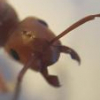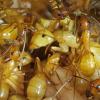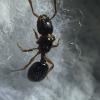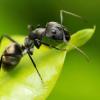The last time one was up for sale in Europe it went for 1500 - ONE THOUSAND FIVE HUNDRED - Euros. You can get five large ant setups for that.
My recommendation for a classroom ant would be Messor barbarus. Not a queen (they are very sensitive during founding) but a small colony of a few dozen ants.
They are:
- cheap to buy
- cheap in maintenance due to being seed-eaters (they can eat seeds for carbs and boiled egg for protein)
- VERY active (one of the most active ant species once they have a few hundred workers and some substrate to dig)
- can be left alone for extended periods (as long as they have enough seeds and water they can be left alone for even a month)
- grow relatively large but not too large (about 12-15k average adult colony size)
- Can't sting and don't have acid either (large majors can bite though)
- have only a weak hibernation from December to March at around 15°C (if that's an issue there's also Messor species that do not hibernate)
Most Camponotus grow slow, are very inactive while small colonies and nocturnal on top, bad choice for a classroom.
Small ants like Lasius or Pheidole are escape artists that are hard to contain, not a good choice either.
Solenopsis outright explode into existence with their ridiculous growth rate, are escape artists and have painful stings which can hurt for days and cause nasty inflamations. Great choice if you want to get sued by parents.
Carebara are SUPER sensitive, notoriously hard to raise and absolute hate being shipped. Terrible choice for a classroom.
Most Serviformica species (like Formica fusca) are very sensitive to disturbance but there are a few (like Formica cinerea) that are more confident and aggressive which could work in a classroom (they need constant feeding though, especially during the summer).






























